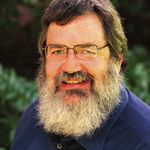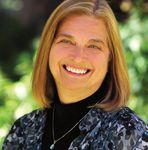UNRAVELING THE MYSTERY MOLECULE BY MOLECULE CELL BY CELL NETWORK BY NETWORK - Center for Learning and Memory
←
→
Page content transcription
If your browser does not render page correctly, please read the page content below
UNRAVELING THE MYSTERY MOLECULE BY MOLECULE CELL BY CELL NETWORK BY NETWORK
Center for Learning
and Memory
The University of Texas
at AustinThe Center for Learning and Memory at The University 1.5 million children diagnosed
of Texas at Austin marshals the collective expertise of with some form of autism
premier neuroscientists from diverse disciplines to unravel
Alzheimer’s disease affects
the mechanisms that govern learning and memory and
4.5 million people annually
cognitive disorders. Research spans the fields of neurobiology,
molecular biology, genetics, physiology, behavior, physics Neurons can transmit
and computer science. information as fast as 250 mph
The Center promotes the exchange of ideas and expertise
across different disciplines and levels of analysis (from mol- More than 1,000 brain diseases
ecules to organismal behavior) while specifically focusing on and disorders
understanding how we learn and remember things.
The Center represents a bold new opportunity for the
future of learning and memory research. It is a place where
progress towards understanding learning and memory is
driven by the imagination and skill of our faculty.OUR GOAL IS TO REVEAL THE BRAIN MECHANISMS UNDERLYING LEARNING & MEMORY
Memory matters. A lot. Arguably it is one of the qualities
that makes us human.
Some of the most prevalent afflictions that affect learning
and memory, including Alzheimer’s, addiction, depression,
traumatic injury, epilepsy and stroke, place a staggering
burden on society in terms of human suffering and 1 quadrillion synapses
economic impact.
Given these personal and economic costs to society, the Approximately 3 million
Center’s research is unquestionably for and about our daily people have epilepsy
lives and public health. Research at the Center builds the
Stroke affects 4.7 million
foundation of knowledge about the brain that is essential
people annually
for understanding disorders of learning and memory. We
hope to begin to understand, at a fundamental level, what 100 billion neurons in the
it means to be human. human brainConnect With Us Did you learn anything from this brochure? Do you remember it? Everything that just occurred during your reading involved learning and memory and a complex interplay of neurons, genes and molecules. Contact us to learn more about how our research is unraveling these great mysteries of the human mind. Dr. Daniel Johnston Director 512 232 6564 djohnston@mail.clm.utexas.edu Dr. Susan Cushman Communications Coordinator 512 232 2631 scushman@mail.clm.utexas.edu www.clm.utexas.edu
Center for Learning and Memory Ila Fiete, Ph.D.
Assistant Professor,
The University of Texas at Austin
Neurobiology
Fiete uses theoretical and
FACULTY computational approaches
to understand how the brain
encodes information, stores
Richard Aldrich, Ph.D. memory on the short and long terms, and performs
Professor, Neurobiology precise computations despite the fact that individual
Aldrich’s research focuses on elements in the brain are noisy and imperfect.
understanding ion channels, a
class of proteins that generate Nace Golding, Ph.D.
and modify nerve and brain Associate Professor,
activity. He studies their Neurobiology
molecular mechanisms and their role in nerve cell Golding is investigating auditory
signaling, mechanisms of behavior, learning and processing in single neurons
memory and diseases, such as epilepsy. and microcircuits in the brain. A
particular focus is on how cells
Laura Colgin, Ph.D. and circuits are shaped by auditory experience during
Assistant Professor, normal development, learning and memory, as well as
Neurobiology in disease states.
Colgin’s research focuses
on understanding how brain Kristen Harris, Ph.D.
rhythms that are generated by Professor, Neurobiology
synchronized activity across Harris’s research focuses on
groups of neurons are involved in complex cognitive the structural components
functions. She uses multi-site tetrode recordings from of the nerve cells, called
behaving rats to investigate how brain rhythms in the dendritic spines, on which the
hippocampus affect memory operations and behavior. synapses between neurons
reside. She investigates how dendritic and synaptic
Michael Drew, Ph.D. structure develop and change with learning and
Assistant Professor, memory. Her findings have important implications for
Neurobiology understanding diseases such as epilepsy and mental
Drew is interested in retardation.
understanding the functional
significance of adult Daniel Johnston, Ph.D.
hippocampal neurogenesis, Director,
which is the birth of neurons in the hippocampus Center for Learning & Memory
of the adult brain. He uses inducible genetic Johnston’s research interest
manipulation and behavioral testing in mice to reveal is in understanding how
the underlying cognitive and emotional processes that nerve cells process and store
are modulated by neurogenesis. information. He studies how the
nerve cells and the connections between nerve cells
in the hippocampus, a region of the brain essential for
learning and memory, change during learning. He also
studies the mechanisms underlying temporal lobe
epilepsy, depression, and Alzheimer’s disease.Helmut Koester, Ph.D. Russell Poldrack, Ph.D.
Assistant Professor, Professor, Neurobiology
Neurobiology Director, Imaging Research
Koester’s research focuses Center
on developing novel technical, Poldrack’s research uses
experimental and analytical high-resolution brain imaging
methods to examine the techniques to investigate the
activity of large numbers of interconnected nerve basic cognitive and neural mechanisms of learning
cells concurrently. These techniques are being used to and memory, decision-making and executive control.
examine how the activity in neural networks changes His work also involves translational research into the
with learning and memory. mechanisms of neuropsychiatric disorders.
Michael Mauk, Ph.D. Alison Preston, Ph.D.
Professor, Neurobiology Assistant Professor, Psychology
Mauk’s research focuses on Preston uses high-resolution
understanding the ways in functional brain imaging
which the brain processes techniques in humans to
information and learns. understand how new memories
He uses experimental and are formed and how we
computational techniques to reveal the rules by which remember past experiences. She focuses on the
the cerebellum learns and stores motor memories and medial temporal lobe of the brain and how it supports
the ways prefrontal cortex mediates working (short- memory and its involvement in disease.
term) memory.
Kimberly Raab-Graham, Ph.D.
Hiroshi Nishiyama, Ph.D. Assistant Professor,
Assistant Professor, Neurobiology
Neurobiology Raab-Graham is interested in
Nishiyama’s research understanding the signaling
interest is in how networks pathways that are engaged in
of interconnected brain cells response to neural activity. She
remodel in the adult brain to focuses on how mRNA is translated into protein in the
support learning and memory, and during pathological nerve cell during learning and memory, and in a variety
conditions such as disease or injury. of pathological conditions.
Jon Pierce-Shimomura, Ph.D. Boris Zemelman, Ph.D.
Assistant Professor, Assistant Professor,
Neurobiology Neurobiology
Pierce-Shimomura studies Zemelman’s research focuses
the genetic mechanisms that on understanding the roles
govern learning and contribute of specific populations of
to neurological disorders. He hippocampal neurons in
approaches this complex subject by studying how memory formation. By identifying and perturbing
conserved genes contribute to behaviors in the simple the activity of different cell types during memory
but powerful model nematode C. elegans. tasks, he is revealing the contribution of each to the
mechanisms of memory.You can also read



























































